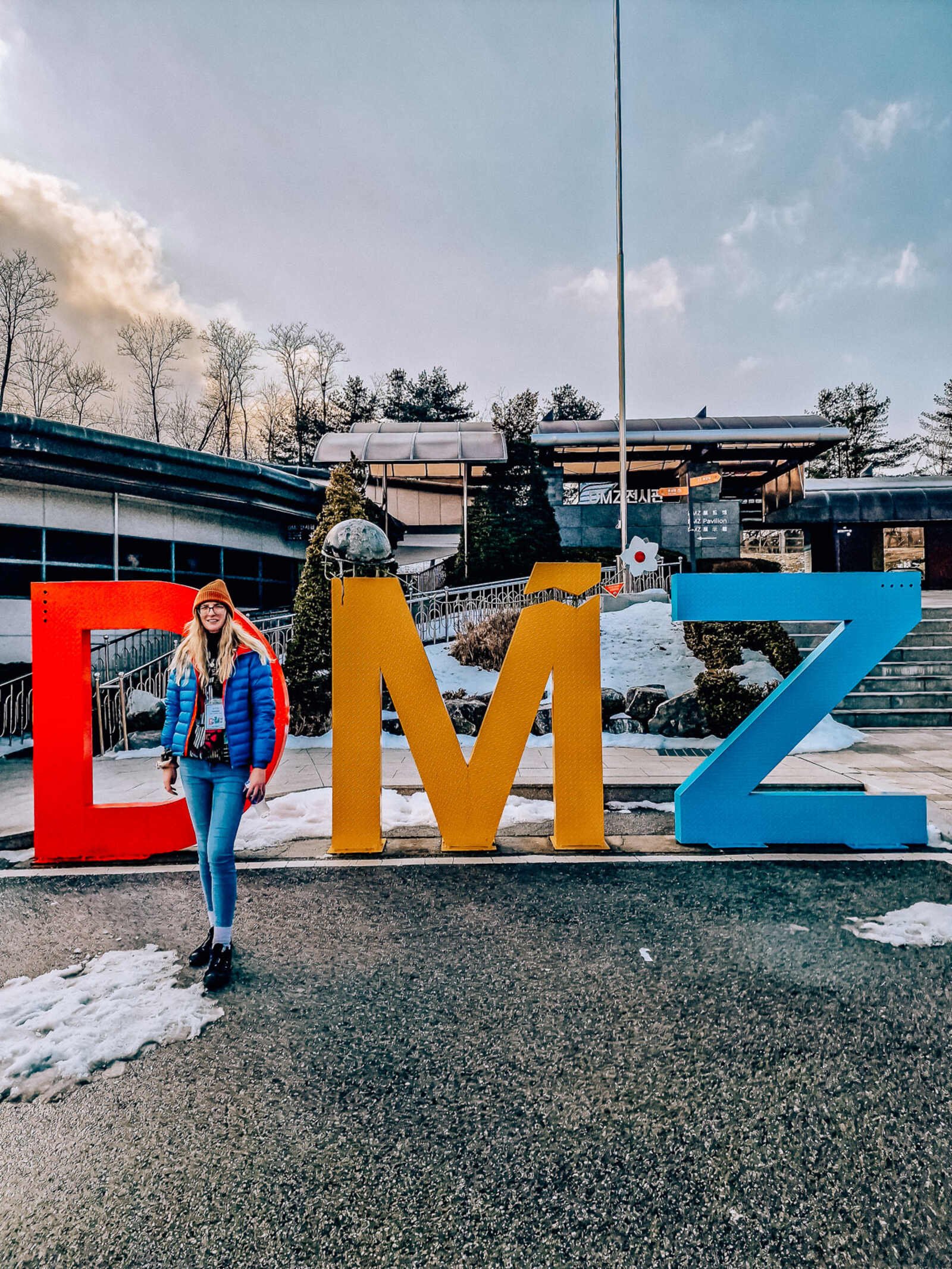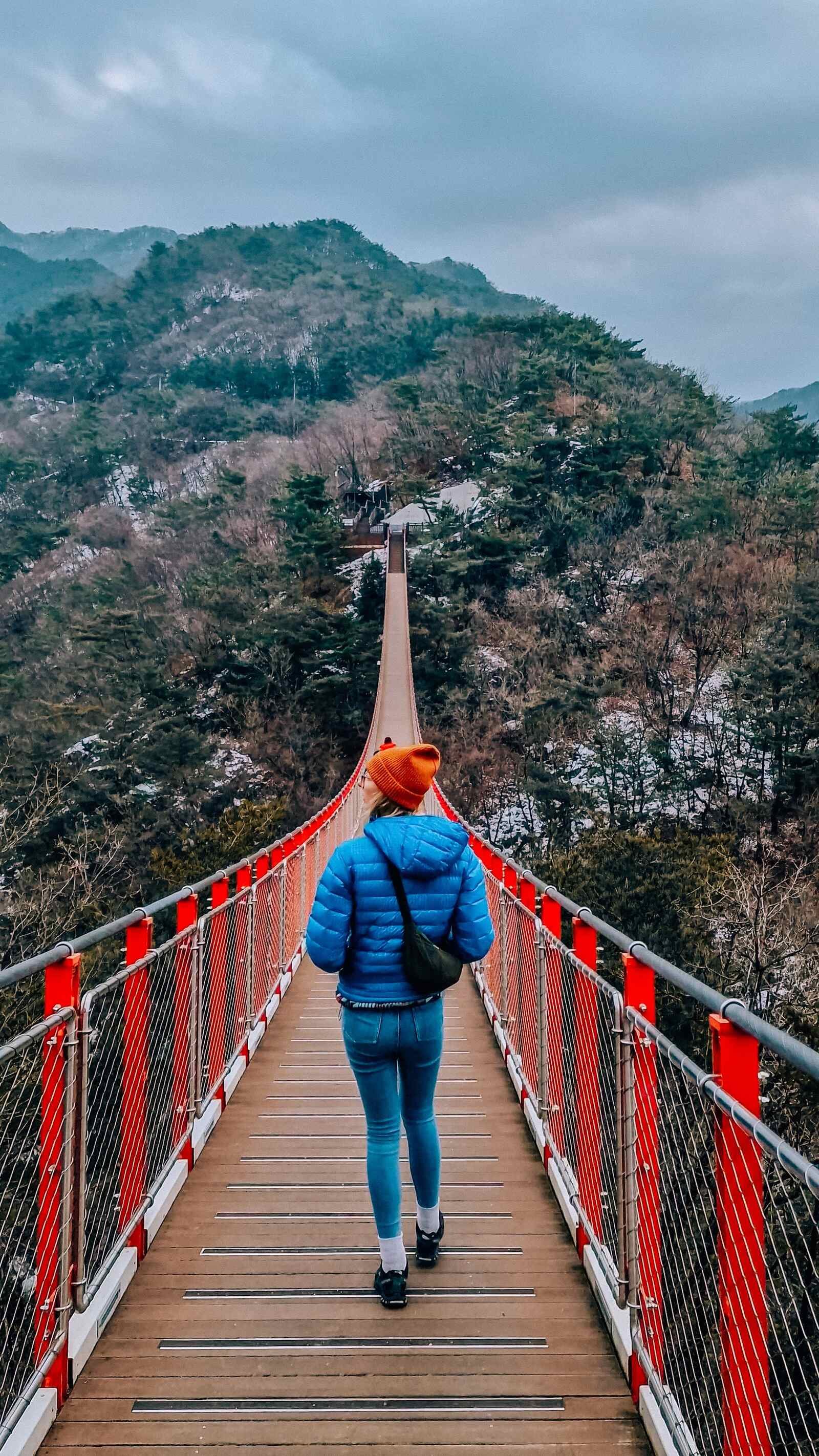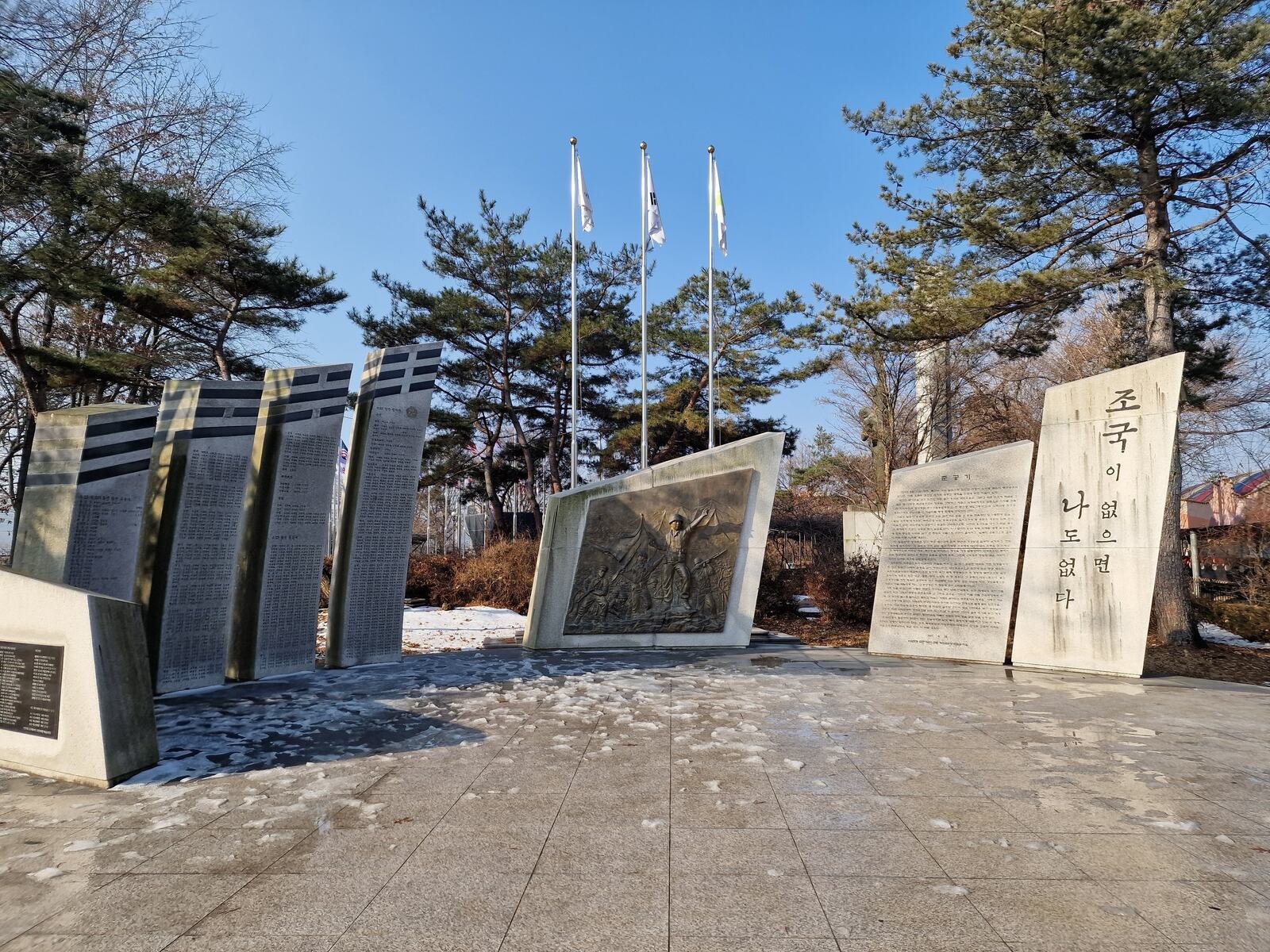I knew when we visited Korea for 10 days that I wanted to do on a DMZ tour from Seoul, despite having had very little interest in “dark tourism” in the past, I think the relatively recent history of the Korean War and how much I have seen and heard about the DMZ in the media made me want to experience it for myself.
I won’t lie, I was nervous.
It is an active military zone after all, and on that makes the space between two warring countries.
Nevertheless, we did a DMZ day trip from Seoul which we booked our DMZ tour through GetYourGuide so I rationalised that, as one of the most popular day trips from Seoul and with hundreds of positive reviews, I would be just another visitor.
So if you’re like me and feeling a little apprehensive or you’re struggling to decide on the best tour to the DMZ from Seoul, I’m hoping my guide will give you the information you need, and maybe some peace of mind too!
Other Korea articles you might be interested in:
The DMZ main area
Disclosure: This post may contain affiliate links, which means I may receive a commission if you click a link and purchase something. While clicking these links won't cost you anything, they will help me to keep this site up and running! Check out the full disclosure policy for more details. Thank you so much!
What is the DMZ?
The DMZ stands for Demilitarized Zone and refers to the neutral border territory between the North and South Korea.
For decades since the Korean War, this area has acted as a buffer zone between the two countries, although the two countries are no longer in direct combat with each other, they are not yet at peace.
How to do a day trip to the DMZ from Seoul?
You can’t simply take a day trip from Seoul to the DMZ.
Because the DMZ is a highly controlled military zone, you can only visit the DMZ with a certified tour company which will have the means and resources to submit your passport for background check and plan your trip.
So even if you’re not someone who likes group tours, unfortunately a tour is your only option for visiting the DMZ.
The edge of the DMZ
How far is the distance from Seoul to DMZ?
If you’re wondering how far is Seoul from DMZ, you might be as surprised as I was.
In fact, the DMZ is only around 30 miles from Seoul and it took just over an hour for us to get there by coach with a stop on the way.
What to expect on your tour to the DMZ from Seoul
It’s very important to know what to expect when you plan your visit to the DMZ, while there isn’t too much that you have to remember or do, one non-negotiable is that you MUST bring your passport.
You must have your passport with you on the trip or you will not be able to visit the DMZ.
This is because the tour guide will take your passports and submit them for your passes at the visitors' centre. The DMZ is an active military base so it’s very important that everyone going in and out is properly logged and accounted for,
Here’s a quick rundown of what is likely to happen on your day trip.
There is another stop included on your day tour for us this was Gamaksan Suspension Bridge and mountain, however Majang Reservoir Suspension Bridge is another popular stop.
The reason for this is to stagger the number of visitors inside the DMZ at one time. Also for bigger groups it’s often a good way to pass time while they wait for authorisation for your passes to get into the DMZ.
After our mountain and suspension bridge stop, we went to the DMZ visitors centre where our passports were submitted and we got our authorisation.
Then it’s on the the DMZ.
At the border to the DMZ, the bus will be stopped and boarded by military officials who will verify your passport and identity.
Then it’s onwards to your stops inside the Demilitarized Zone itself!
Another important thing to note is that your tour could be cancelled at short notice. Being an active military zone between two countries who do not see eye-to-eye, means that if the military has any concern about safety or if there is a military exercise happening that’s a risk to the public, then the area will be closed to DMZ visitors and tours at that time.
Gamaksan Suspension Bridge
The original border crossing between North and South Korea
The best DMZ day tour from Seoul: my Korea DMZ tour review
Now you know the importance of bringing your passport and the rigorous checks involved, you’ll want to know what happens in the tour itself.
This is the exact DMZ tour we did, I really highly rate it and would definitely recommend but you’ll also find plenty of similar ones on GetYourGuide or other providers like Viator DMZ tours.
From my understanding, many of the guided tours of the DMZ are similar in the stops that they make. You can generally expect to stop at:
1. The War Memorial, Freedom Bridge, Peace Bell and Steam Locomotive to learn about the history and legacy of the war
2. The Third Tunnel - here you will watch a short educational film about the numerous tunnels made by the North to try and infiltrate and attack South Korea. Then you will leave your personal belongings in a locker (no phones or cameras allowed) and don a hard hat to descent into the tunnel itself
3. The Observatory - this was our last stop of the day and probably my favourite but also the most surreal. In this 4-storey building, you can ascend to the roof where there are numerous binoculars and you can use these to look across the DMZ into North Korea.
Here’s a little more info about my experience at each of these stops.
The steam locomotive damaged by shrapnel and gunfire
Freedom Bridge originally used by POWs to cross from the North to the South
The War Memorial
Here was a great place to start off our tour as our guide did a fantastic job of sharing the history and timeline of the war and its horrors while also incorporating entertaining anecdotes such as the time that the North planted landmines and the South responded by blasting Psy - Gangnam Style across the DMZ into the North where popular music and culture is strictly prohibited.
The war memorial here is a significant gathering place for many Koreans who are separated from their family in the North. At the end of the war in 1953, around half the population of South Korea were separated from at least one family member by the war and most have never been reunited.
The Korean war memorial in the DMZ
The Third Tunnel
I had no idea that there had been so many attempts by the North to subterraneously attack the south. Over the years following the war and well into the 80s, numerous tunnels have been found and attack attempts thwarted by the South.
You will learn about these astonishing facts and tunnels in an educational video before you descent into the tunnel itself.
The Third Tunnel was discovered in 1978 and is 73m below ground. You descend down a steep, sloped tunnel then the last section is through the roughly carved tunnel to the opening where you are just 150m from the North!
You cannot take electronics or take pictures, all belongings must be left in a locker at the surface and everyone must wear hard hats as the final; section has very low rock ceilings!
I probably wouldn’t recommend this if you’re claustrophobic!
The Observatory
There was something strangely uncomfortable about looking through binoculars into North Korea and seeing people who have no idea you’re watching.
Because I’m not joking when I say you will see North Koreans going about their daily lives. I could see the military bases, local villagers, cows and their homes and streets - so strange to see a country and people you only usually hear about on the news or through the media.
Again our guide gave us loads of interesting information here and a few fun anecdotes including the one about the competition between which side had the tallest flag pole - I’ll leave you to go on the tour and hear the anecdote for yourself!
A couple of things really stuck out to me though, particularly up on this rooftop where you can see North Korea in one direction and South Korea in the other.
The South has of course progressed vastly since the war, Seoul is proof that there’s no shortage of modern technologies, a thriving economy and Western influence. In contrast, when you look through the binoculars, there are no cars in the North, there aren’t even any buildings lit up, there are no advertising signs or any real signs of modern life or electricity. This is because no one owns cars in the North, no one is allowed and they can’t be afforded, only the military have vehicles.
Leading on from the last point about no electricity in sight. The North often has blackouts and access to electricity is limited. As a consequence, you will notice that the land is spare. There are little-to-no trees because they have all been chopped down and used as fuel to warm houses, cook and generally allow people to live.
In contrast, the view of South Korea behind you is full of greenery and thriving towns,
It really is a stark reminder of the different directions that the two countries have gone in over the last 70 years.
Looking out from the Observatory to North Korea
Summary: Planning the best DMZ day tour from Seoul
I was nervous to visit the DMZ but I absolutely loved it and do not regret visiting at all.
I learnt so much about the Korean War which was a topic we were never taught about in school plus I was able to see the lasting impact of the separation on the generations that were split up, and the way the North is living now.
There is still a lot of talk at the DMZ about reunification and the hopes of the South to reunite families.
I don’t know the future and how things will change over the coming years, but it’s an experience I’m so glad I was able to do while it was possible.








